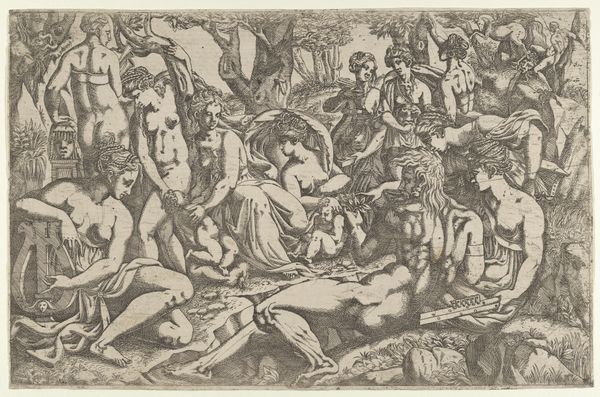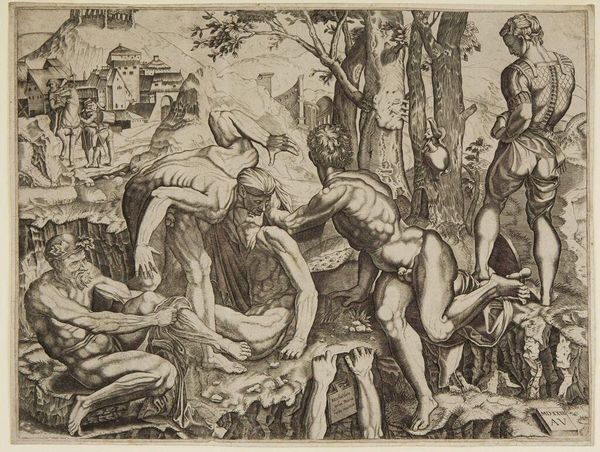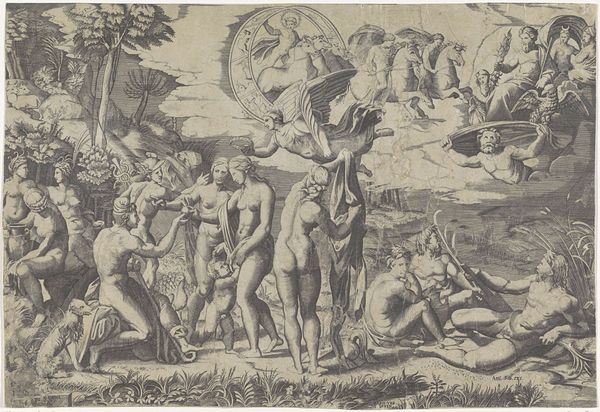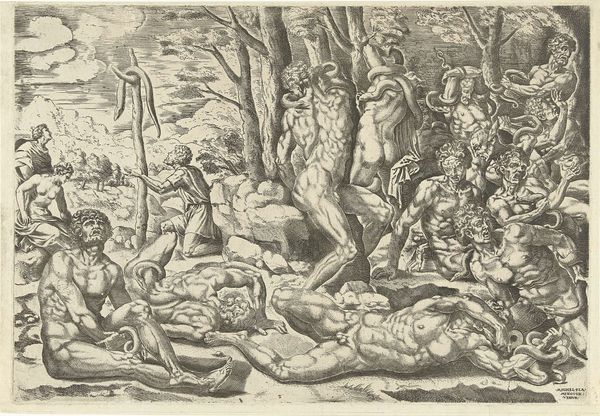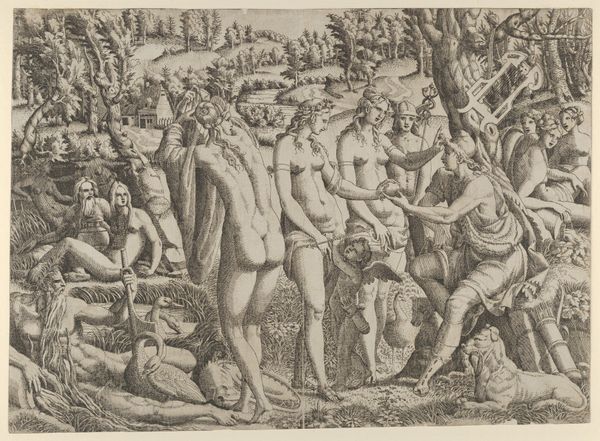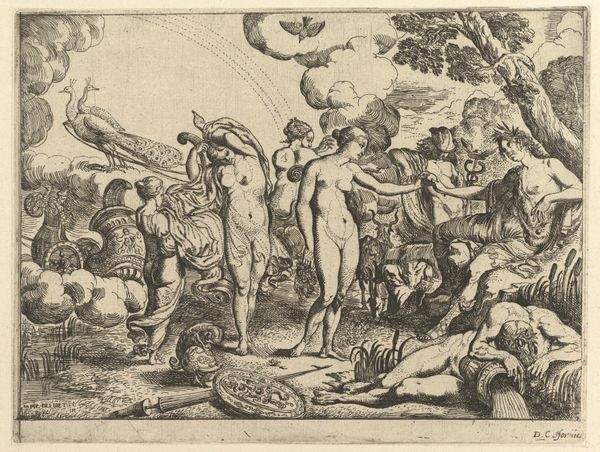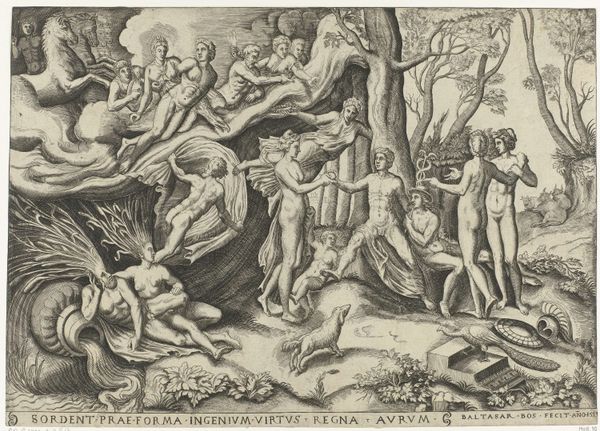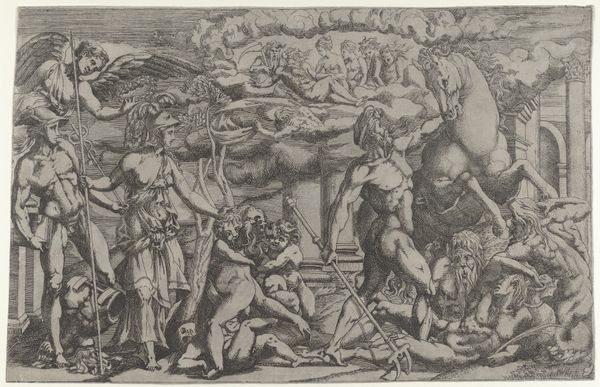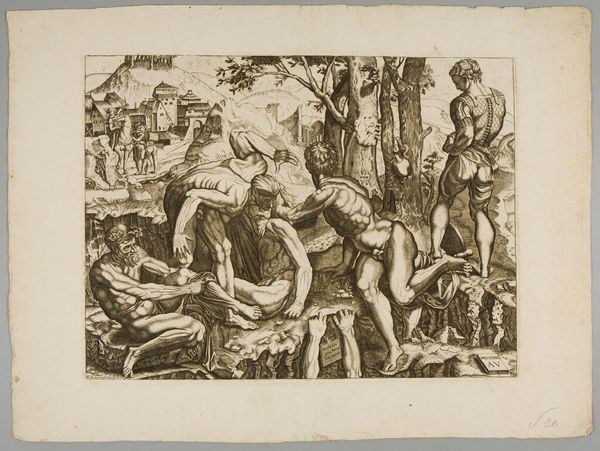
print, engraving
#
ink drawing
# print
#
pen illustration
#
pen sketch
#
landscape
#
figuration
#
11_renaissance
#
history-painting
#
italian-renaissance
#
nude
#
engraving
Dimensions: height 331 mm, width 432 mm
Copyright: Rijks Museum: Open Domain
Editor: Here we have "Flora Gives a Garland," an engraving by Giulio Bonasone from somewhere between 1501 and 1580, held here at the Rijksmuseum. It feels almost dreamlike in its composition; like peering into a classical idyll. What strikes you about it? Curator: Dreamlike is a good way to put it! It's interesting how Bonasone uses the medium of print to create a sense of softness, a blurring of lines that gives the whole scene an ethereal quality, isn't it? It’s like the whole world is slightly out of focus. Notice how the figures interact, the gentle offering of the garland, and the almost melancholic repose of the reclining figure. There's a narrative unfolding here, a little slice of mythology. But I wonder, who do you think these figures *are*? Any theories? Editor: Well, given the title, the woman offering the garland has to be Flora, right? The others feel like maybe nymphs or other mythological figures... But who's she crowning? And is that someone *sleeping*, or something else entirely? Curator: Absolutely! That's part of the charm, the not-quite-knowing, don’t you think? Flora, the goddess of Spring, fertility, and flowers, offers her gift. This scene becomes a rumination on the fleeting nature of beauty, the cyclical nature of life and death…it hints at something beyond our immediate grasp. Is the reclining figure asleep? Dying? Perhaps she's a symbol of winter, waiting for Flora's touch to reawaken her. Think about that contrast – so powerful, isn’t it? Editor: I didn't even consider the seasonal allegory; that adds a whole new layer. So, it’s less about a specific story, and more about evoking a broader idea of life, death, and rebirth? Curator: Precisely! Bonasone wasn’t just illustrating a myth; he was inviting us to meditate on eternal themes through a Renaissance lens. It's a reminder that art can be a portal, whisking us away from the here and now into someplace transcendent. Editor: That makes me see the piece in a totally different light. Thanks!
Comments
No comments
Be the first to comment and join the conversation on the ultimate creative platform.

